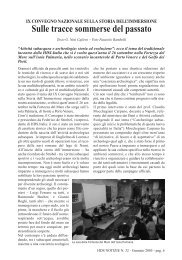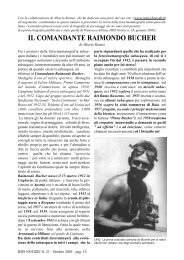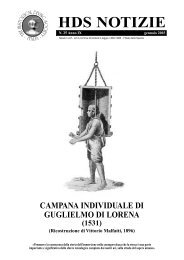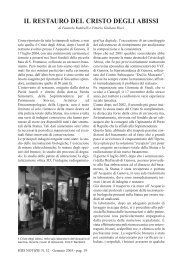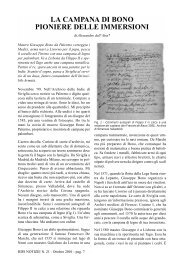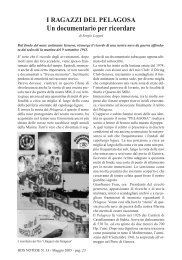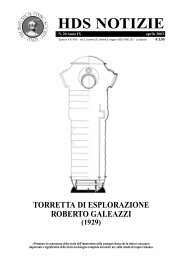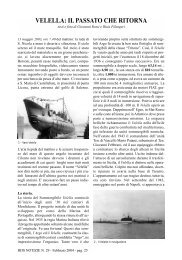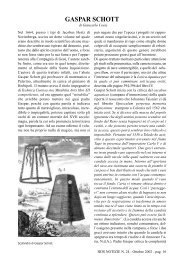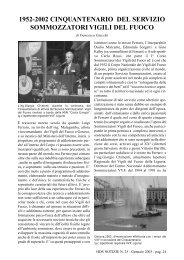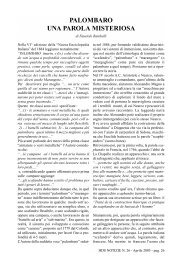HDS NOTIZIE N. 27 - Luglio 2003 - Historical Diving Society Italia
HDS NOTIZIE N. 27 - Luglio 2003 - Historical Diving Society Italia
HDS NOTIZIE N. 27 - Luglio 2003 - Historical Diving Society Italia
You also want an ePaper? Increase the reach of your titles
YUMPU automatically turns print PDFs into web optimized ePapers that Google loves.
I due disegni rappresentano le versioni del vestito dell’HICHTYOSANDRE di Touboulic realizzati da Daniel David sulla<br />
base dei documenti ritrovati nel 1977, il primo e nel 2002, il secondo.<br />
Il primo disegno del 1977, con i pantaloni al ginocchio, è basato sulla parola “coulotte” usata da Touboulic nella sua<br />
richiesta di brevetto, che in effetti identifica un paio di pantaloni, in uso fino al 1830 circa, che termivano subito sotto le<br />
ginocchia<br />
Il secondo disegno, del 2002, con i pantaloni lunghi fino alla caviglia, è basato sul fatto che Touboulic, nella sua lettera<br />
del 3 marzo 1808 specifica:<br />
“…le maniche e la coulotte devono essere in cuoio trattato con sego. Bisogna realizzare le cuciture in maniera che l’acqua<br />
non possa filtrarvi attraverso. Si piazza, al basso di ciascuna gamba una piccola apertura che si chiude a vite.<br />
Queste aperture servono a far scolare l’acqua che potrebbe essere filtrata…”<br />
The two drawings show the versions of the cloth of the HICHTYOSANDRE by Touboulic realised by Daniel David on the<br />
basis of the documents found in 1977 and in 2002.<br />
The first drawing of 1977, with trousers down to the knee, is based on the word “culottes” used by Touboulic in his<br />
request for a patent, that in effect identifies a pair of trousers, used until 1830s, with length down just below the knees.<br />
The second drawing, of 2002, with trousers all the way down to the ankle, is based on the fact that Touboulic, in his letter<br />
of 3 March 1808 specifies:<br />
“…the sleeves and the culottes have to be in leather treated with tallow. It is necessary to make the stitching so that<br />
water cannot filter through. A small aperture closed by a screw is placed at the bottom of each leg. These apertures are<br />
used to drain the water that could have filtered inside...”<br />
<strong>HDS</strong> <strong>NOTIZIE</strong> N. <strong>27</strong> - <strong>Luglio</strong> <strong>2003</strong> - pag. 18



